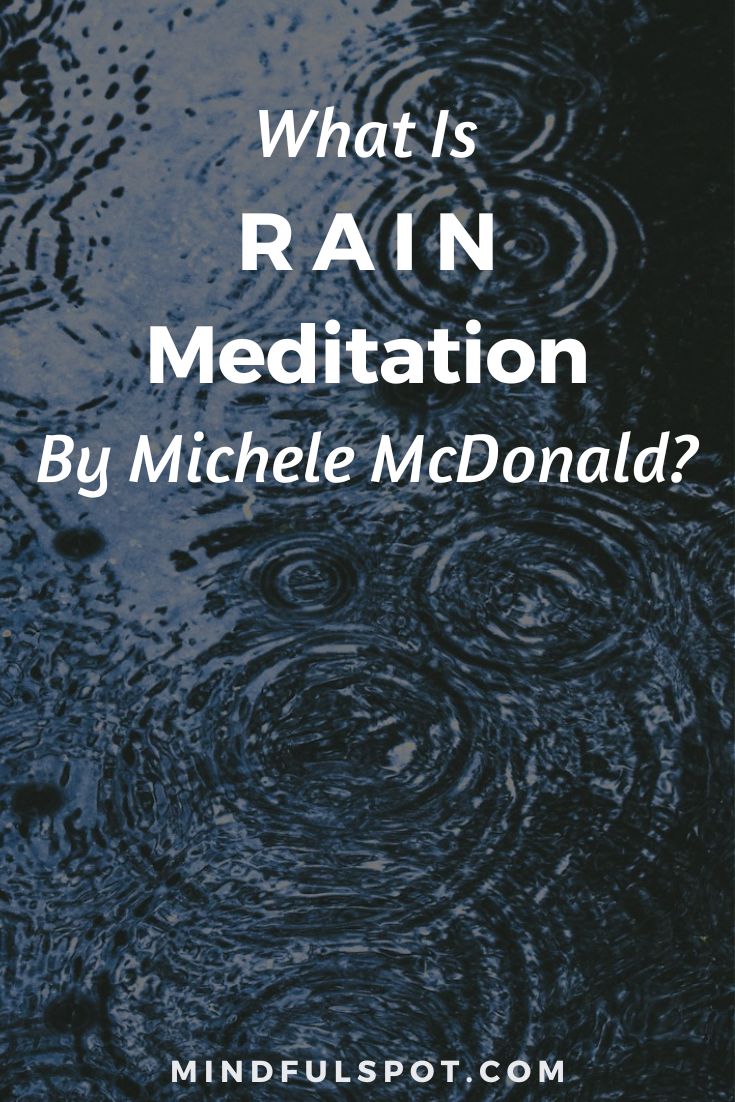For a very long time, I had a hard time accepting that I was too critical of myself. Even when I noticed negative thoughts during meditation, I saw them as justified. Especially when it came to running this blog. Of course, I told myself, you’re not disciplined enough, not consistent enough, not creative enough. What I failed to realize for a very long time was that I was a total monster to myself by thinking like that. Which, by the way, how negative self-talk works in all of us.
When we live on autopilot, we constantly berate and belittle ourselves through negative thinking. And the worst thing is that we accept those thoughts as true and normal. Our busy schedules hardly leave us any time to slow down and take a conscious breath. We don’t have time to unpack all that negative self-talk and recognize it for what it is: complete lack of self-compassion that is undermining our well-being.
When I realized that I was too hard on myself, I decided to actively work to undo the habitual self-judgment that became almost like a second nature to me. And that’s when I came across RAIN meditation. I like to experiment with different meditation methods to see how they affect my mood, productivity, and creativity. That’s why I was excited to try a version of this technique, first introduced by a meditation teacher Michele McDonald.
What Is RAIN Meditation?
It’s an acronym for Recognize, Accept, Investigate, and Non-identification and popularly credited to a mindfulness teacher Michele McDonald.

FREE Self-Test: How Spiritual Are You?
Its effectiveness is based on mindfulness, which allows you to pause and pay attention to what you’re experiencing at this moment. Through this mindful awareness, RAIN makes it easy for you to pacify your negative thoughts or feelings. And that’s why it’s such a good self-compassion tool that can increase your well-being.
How to Practice RAIN Meditation
The first step is simply to memorize the acronym and the meaning of each letter:
Recognize each thought or feeling as it arises.
Accept each thought or feeling just as they are.
Investigate each thought or feeling with interest and care.
Non-identification: thoughts or feeling are just happening, they’re not “me.”
Here’s each step in more detail:
Recognize: The first thing you need to do is to get in the habit of naming thoughts or feelings as they arise. It could be anything from “I think she hates me for missing her text this morning” to “I feel worried about my presentation tomorrow.” Because of our fast-paced lives, it can be difficult to notice all the thoughts or feelings that are going through our heads during the day, but with practice it gets easier.
Accept: Next, just let every thought and emotion be there. Try not to judge or push it away. Again, this can be difficult because you’ve conditioned yourself to ignore your inner turmoil and pretend like everything is fine. This is why all of that negativity accumulates and causes stress and burnout. No matter how uncomfortable it may feel initially, accepting your thoughts and feelings without trying to suppress them is a necessary step to make this meditation work.
Investigate: Now that you’ve become aware of your thoughts and emotions, it’s time to investigate them. This allows you to gain additional insights into what’s going on inside you and deepen your self-awareness. You may inquire: Why do I think this way? What is this emotion trying to tell me? How do these thoughts and emotions affect my body? These questions will help you realize just how much unnecessary suffering you’re creating for yourself at this moment.
Non-identification: One of the main benefits of meditation is that it allows you to create some distance between yourself and your thoughts and emotions. And that’s what the final step of RAIN meditation is all about. You stop believing every negative thought in your mind, no matter how convincing it may sound. You stop being swayed by every negative emotion, no matter how overwhelming it may feel at that moment. This comes as a result of all three previous steps: when you notice, accept, and investigate your thoughts and feelings, they lose their ability to undermine your well-being.
Is RAIN Meditation Buddhist?
Yes, RAIN is Buddhist because it stems from the American Vipassana Movement, which peaked in the 1980s and has since given way to the secularized “mindfulness” practice. In very simple terms, it’s a branch of modern Burmese Theravada Buddhism that promoted the practice of mindfulness meditation (satipatthana) to acquire insight (vipassana) into various spiritual truths, such as impermanence, suffering, and not-self, with the ultimate goal of attaining Nirvana. Of course, for ordinary people like us, Nirvana, or any other less significant transcendental goal, is mostly out of scope. That’s why simplified versions of the practice like RAIN were invented — to help us deal with negative thoughts or difficult emotions. It makes the rat race a little bit easier.
What Is the Best Way to Approach RAIN Meditation?
From my personal experience, I can say that RAIN meditation is an advanced meditation technique. You may struggle to reap its benefits unless you’ve gained some basic self-awareness skills by trying these methods first: body awareness meditation to reconnect with your body, breathing meditation to become aware of your unconscious thoughts, and lovingkindness meditation to actively cultivate kindness towards yourself and those around you. You can think of RAIN as a framework that puts your basic meditation skills into a sequence to overcome life’s challenges. Once you’ve mastered the essential meditation techniques I mentioned earlier, it will be much easier to practice RAIN meditation in your everyday life. Complement with Buddhist Meditation: Tranquility, Imagination, and Insight by Kamalashila.

FREE mindfulness resources for stress relief
I’m a freelance writer and mindfulness advocate behind this blog. I started my meditation practice in 2014, and in 2017 I launched this website to share what I learn with others. Here are the three things you can do here:
1. Schedule a free consult if you want to learn Buddhist meditation.
2. Download free mindfulness resources for stress relief
3. Join Patreon for exclusive content and community meetings.









